Optical System Design
To be updated!
Before 2017
Optical system design is one of our major research fields, it builds on Prof. Liang’s extensive experience in optical system design, including 16 year industry experience in developing commercial optical products.
Our research in optical system design ranges from micro-optical systems (such as endoscope) to space optics.
Optical design for space optics – OSIRIS-REx Mission*
The Origins, Spectral Interpretation, Resource Identification, Security, Regolith Explorer (OSIRIS-REx) is an NASA asteroid study and sample return mission. It is a New Frontiers mission that will launch in September 2016 and rendezvous with asteroid 101955 Bennu (formerly designated 1999 RQ36), in 2018. The goal of the mission is to retrieve a surface sample and return it to Earth. Material returned is expected to enable scientists to learn more about the time before the formation and evolution of the Solar System, initial stages of planet formation, and the source of organic compounds which led to the formation of life.

One of the most important assets is a trio of cameras called the OSIRIS-REx Camera Suite (OCAMS), developed at the University of Arizona. The design of OCAMS allows to image Bennu over 9 orders-of-magnitude in distance, from an initial distance of 1 million kilometers down to 2 meters. Together they acquire information on asteroid Bennu by providing global mapping, sample site reconnaissance and characterization, high-resolution imaging, and records of the sample acquisition. OCAMS consists of the PolyCam, the MapCam, and the SamCam.
Applied Optics Lab designed optical systems for all three cameras.
- PolyCam, an 8-inch telescope, acquires images with increasingly higher resolution as the spacecraft approaches the asteroid.
- MapCam searches for satellites and outgassing plumes. It maps the asteroid in 4 different colors, informs our model of asteroid shape and provides high resolution imaging of the sample-site.
- SamCam continuously documents the sample acquisitions.
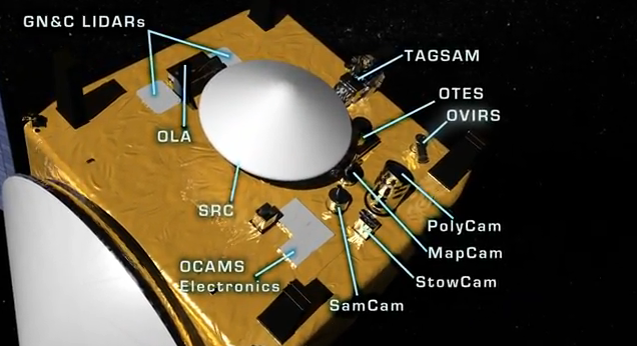
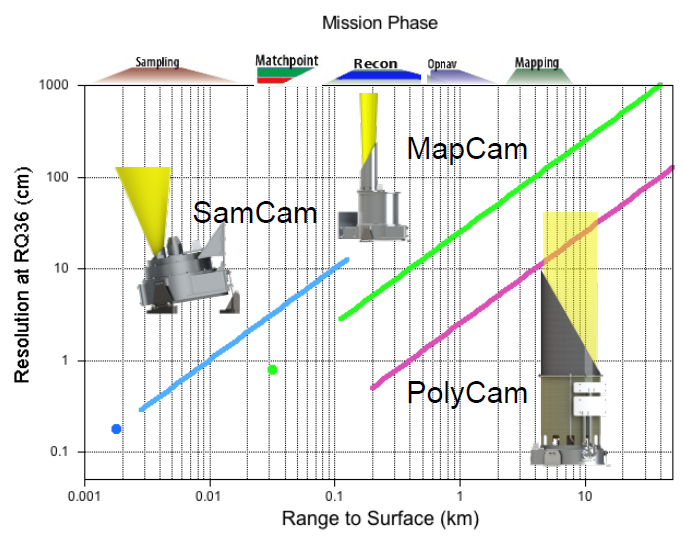
The 3 cameras have overlapping capabilities and can accommodate the loss of a camera. Notice the dots for SamCam and MapCam at their closest approaches, these are modifications of the focal length using a diopter lens in the filter wheel.
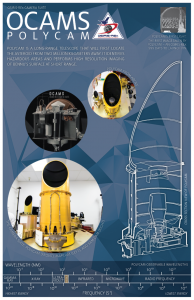 PolyCam
PolyCam
PolyCam is the largest camera of the OCAMS suite. It is a 20.3-centimeter (8-inch) wide telescope with a 63.5-centimeter (25-inch) focal length. It has a resolution of about one-sixth of an arc minute. Its field of view is just less than 1°. It is used for several critical tasks: to acquire the asteroid while it is still a point of light against the background stars, to identify and exclude dangerous areas on the asteroid’s surface by spotting and mapping large boulders and rocks, and to characterize a dozen prospective sample sites in detail. PolyCam has a focus mechanism that converts this telescope into a microscope – allowing our scout to scrutinize the tiniest rocks and pebbles on the asteroid to ensure that they are small enough to fit into the sample head.
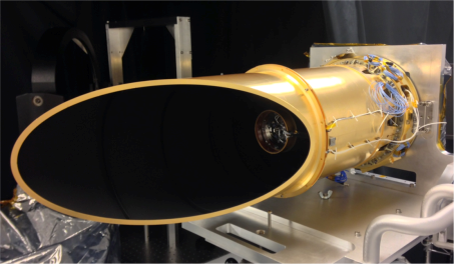
College of Optical Sciences designed and built PolyCam.
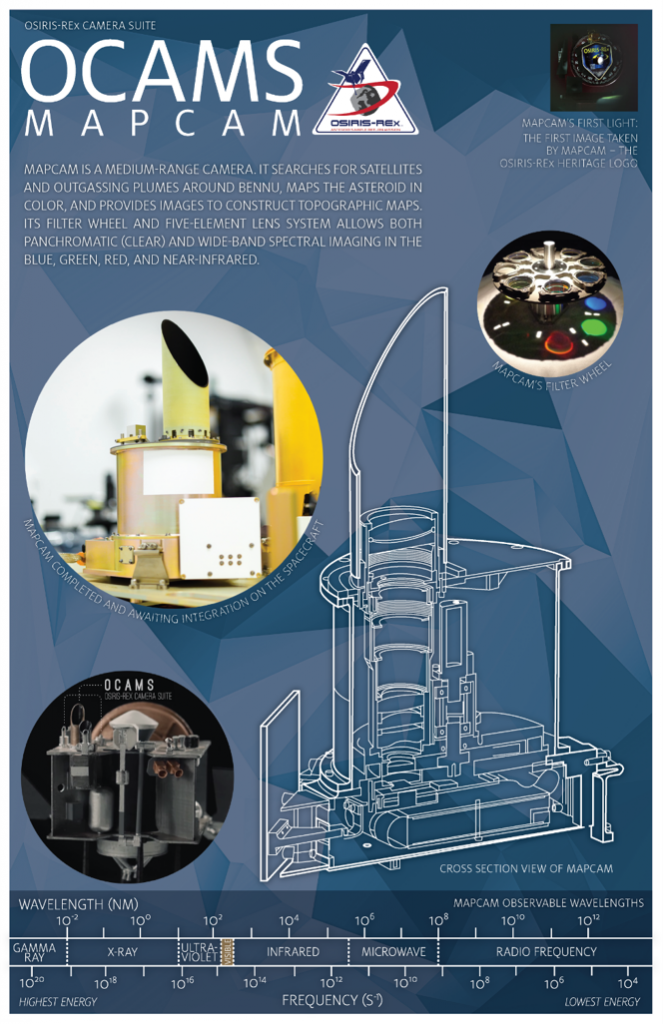 MapCam
MapCam
MapCam will map the entire surface of Bennu from a safe and convenient standoff distance of 5 kilometers (3 miles), watching Bennu spin through a whole asteroid day every 4.3 hours. MapCam has a moderate field of view of 4°, approximately the angular width of 3 fingers held at arm’s length and a resolution of less than 1 arc minute. It has a filter wheel that allows it to image in 4 different colors: blue, green, red and infrared, similar to your foveal region (except for the infrared). It can also rotate a glass plate into its optical train to allow it to refocus light from the relatively short range of 30 meters (100 feet) – our scout needs put on his reading glasses to consult his map from time to time.
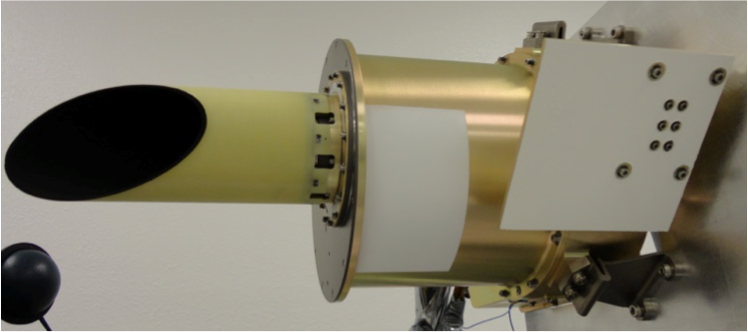
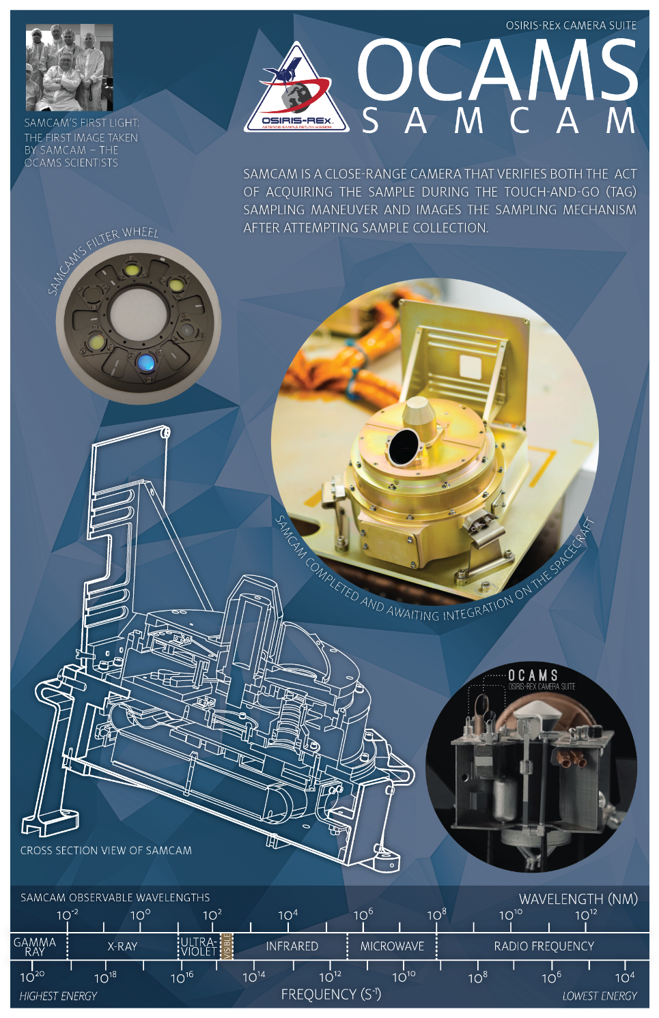 SamCam
SamCam
SamCam is designed to document sample acquisition, possessing a resolution of almost 4 arc minutes and a wide field of view of 21°. SamCam’s field of view captures the spurt of gas and regolith mobilizing out from beneath the sampler head at the moment of sample capture. SamCam’s filter wheel sports three identical filters ready to be rotated into its optical train in case one or more of them get covered by the dust mobilized during the sampling event. SamCam has another very important function. Using its own reading glasses, it observes the bottom of the sampler head to verify sampling success. These observations also ensure that no rocks large enough to prevent the head being inserted into the Sample Return Capsule cling to the surface.
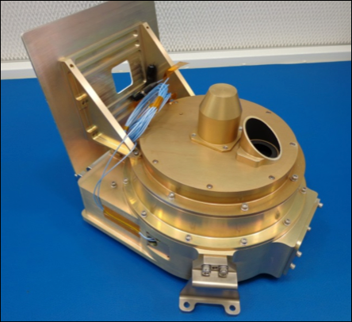
* All information on OSIRIS-Rex are complied from the public websites.

